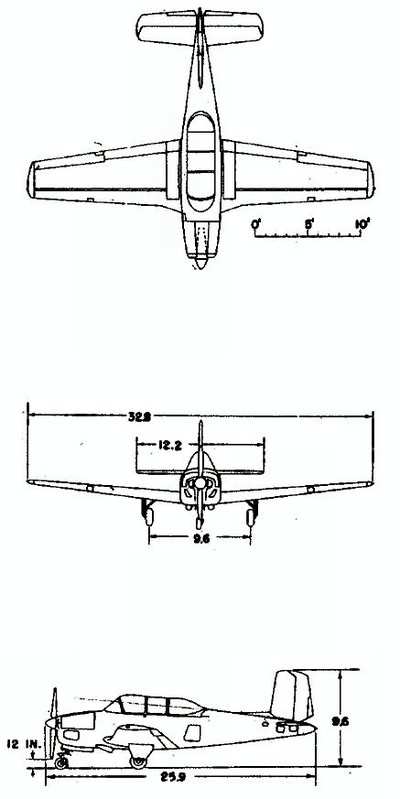The Decision To Abort A Faltering Takeoff Is A Tough One
Sometimes it starts as no more than a weird feeling... other
times, it has more concrete reasons... but the decision to abort a
takeoff, in progress, can be one of the most critical in aviation.
And sometimes, the only true arbiter as to he correctness of the
decision relies on one simple questions... did everyone walk away
in one piece? This time, they did... and we look forward to more
info as to what might have caused the takeoff issues that led to
the decision to abort.

NTSB Identification: ERA11LA249
14 CFR Part 91: General Aviation
Accident occurred Thursday, April 14, 2011 in Linden, NC
Aircraft: BEECH D-45 (T-34B), registration: N93013
Injuries: 2 Uninjured.
This is preliminary information, subject to change, and may
contain errors. Any errors in this report will be corrected when
the final report has been completed.
On April 14, 2011, at 0820 eastern daylight time, a Beech, D-45
(T-34B), N93013, registered to the United States Department of
Agriculture, Forest Service, Federal Excess Personal Property
Program, and operated by an individual, impacted terrain during
takeoff from a private grass strip field in Linden, North Carolina.
The pilot and passenger were not injured, and the airplane incurred
substantial damage. Visual meteorological conditions prevailed and
no flight plan was filed for the personal flight, operated under
the provisions of Title 14 Code of Federal Regulations Part 91.
The pilot stated that he was asked if he would fly the donated
airplane to a museum in New York. On April 7, 2011, the pilot flew
the airplane from Kinston, North Carolina to his private airstrip
in Linden. It was not until the morning of April 14, that the
weather was favorable to resume the flight to the museum. The pilot
got the airplane out of the hangar and conducted a preflight
inspection and noted that each wing tank were about 2/3 full of
fuel. The ground engine run up check was unremarkable and no
discrepancies were noted. The pilot positioned the airplane with
the nose toward the northwest and in such a matter to utilize the
entire 3,000 foot grass strip; the runway was wet with morning dew.
The pilot advanced the power and the target rpm was noted as the
airplane rolled down the grass strip. The pilot recalled that he
rotated about 50 to 60 knots and the passenger believed that the
about 2/3 down the runway the airplane was about 10 to 12 feet over
the runway. At that time the landing gear doors were heard closing
after landing gear retraction. The airplane reached an altitude of
about 50 feet; however, to both the pilot and passenger, the
airplane felt like it was not gaining speed or altitude. The
airplane started to descend and shortly impacted the ground, tree
debris, and a tree stump. The pilot secured the airplane and both
exited the airplane noting a strong smell of aviation fuel.

The responding Federal Aviation Administration inspector stated
that the airplane came to rest flat on the ground with landing gear
and flaps up, about 1,000 feet from the end of the grass strip. The
airplane’s wreckage energy path went through tree stumps and
down tree debris. The airplane’s empennage separated from the
fuselage and came to rest behind the left wing, oriented in the
same direction as the airplane. The wings were observed with dents
in the leading edge and a large gash on the left side of the
aircraft from rear baggage door to the end of the fuselage. Both
propeller blades were curled indicative of power applied at impact.
The northwest end of the grass strip area was cleared to provide a
clearway.
 ANN's Daily Aero-Linx (04.16.24)
ANN's Daily Aero-Linx (04.16.24) Aero-News: Quote of the Day (04.16.24)
Aero-News: Quote of the Day (04.16.24) Airborne 04.10.24: SnF24!, A50 Heritage Reveal, HeliCycle!, Montaer MC-01
Airborne 04.10.24: SnF24!, A50 Heritage Reveal, HeliCycle!, Montaer MC-01 Airborne 04.12.24: SnF24!, G100UL Is Here, Holy Micro, Plane Tags
Airborne 04.12.24: SnF24!, G100UL Is Here, Holy Micro, Plane Tags Airborne-Flight Training 04.17.24: Feds Need Controllers, Spirit Delay, Redbird
Airborne-Flight Training 04.17.24: Feds Need Controllers, Spirit Delay, Redbird




